Volcano

BalloonSome years ago somebody started a business of sightseeing flights in hot-air balloons. The favorable weather conditions and the concentration of tourists turned it into a trademark of Cappadocia. Early in the morning, weather permitting, the sky fills with a good hundred balloons, with some more following in the evening hours. During this time the air is cooler, calmer, and the light is more beautiful. |
RockA rocky outcrop lit by the low sun and framed by trees in the so-called Love Valley looks almost not typical, as other pictures will show. |

|
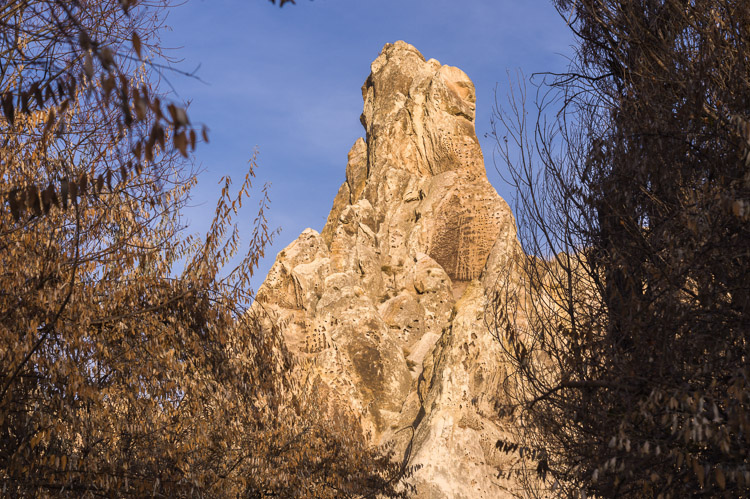
|
Highland

WellThe tuff is sturdy yet relatively soft and easy to carve out for building homes. The whole area thus became a settlement; numerous man-made caves are found in the valley's walls. This underground place was equipped with a well, now dry. |
ApartmentInside of a cave apartment, many of which are not easily accessible or closed. Still, thanks to their sheer number, plenty are left to take a look at. |
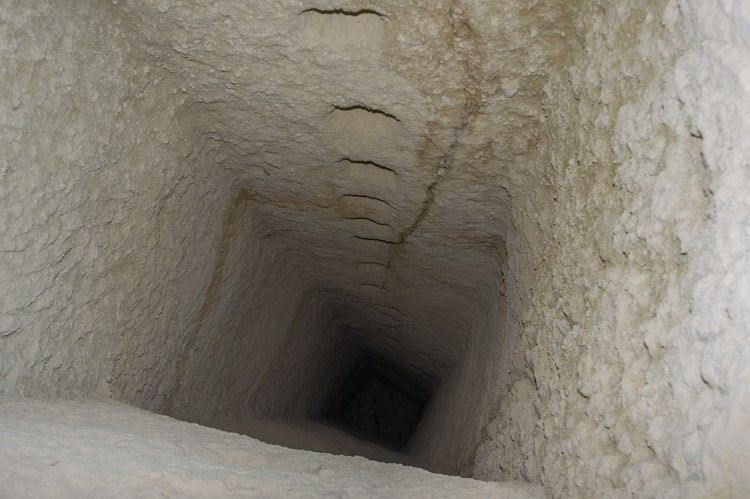
|

|
ChurchesSince Christians also settled in the area, many of the caves harbor churches. Ironically, considering the volcanic history of the area, it is like heaven on hell. |
PaintingsSome of the ancient paintings on the walls and ceilings have survived, although many have not. Often a person's face was hacked away by "infidels". |

|
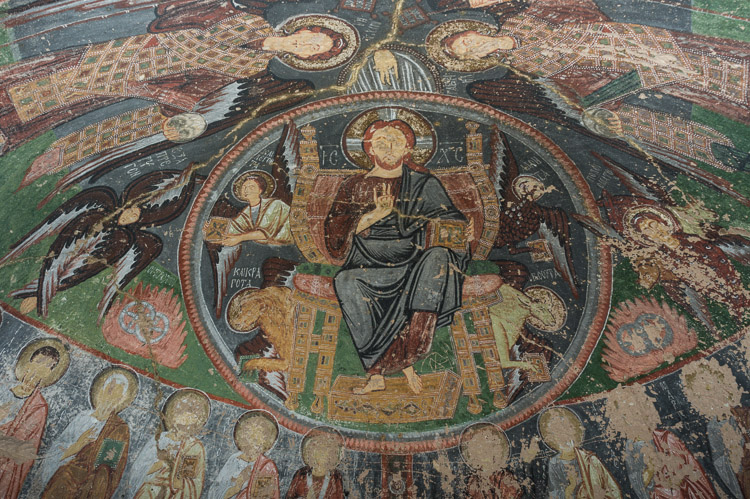
|
Tuff
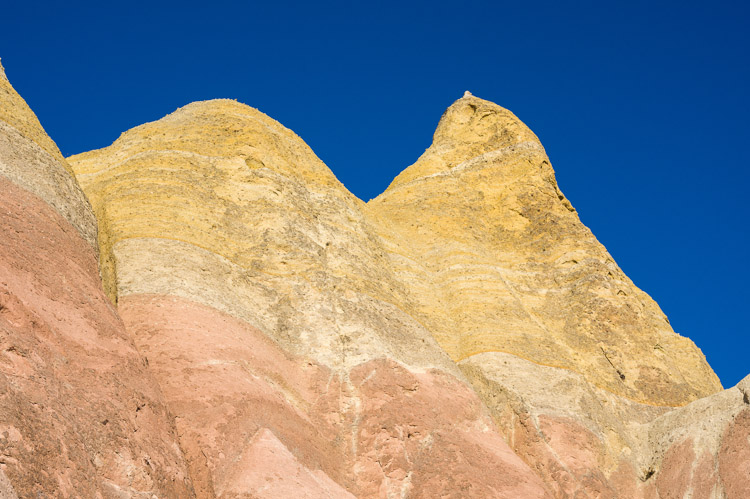
|
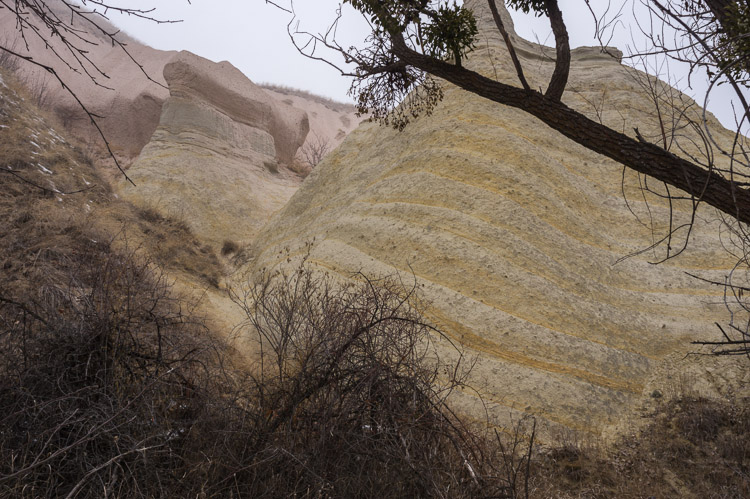
|
MonumentsThe big tuff cones are dwarfed by the walls of tuff in the background. |
Sunny PlaceAnother cave in the evening sun. It would be interesting to know how these dwellings looked like in the past. |
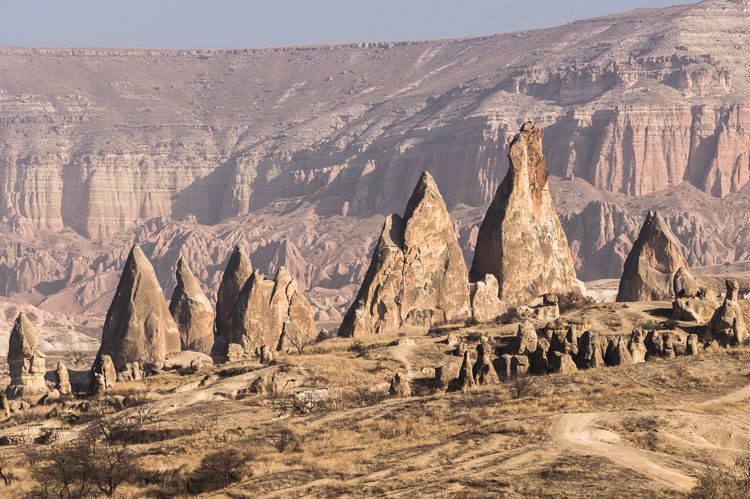
|
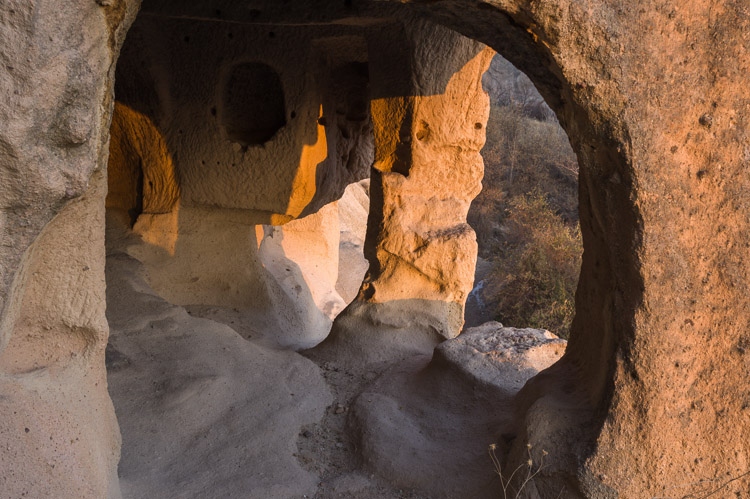
|
Panorama

Tunnels
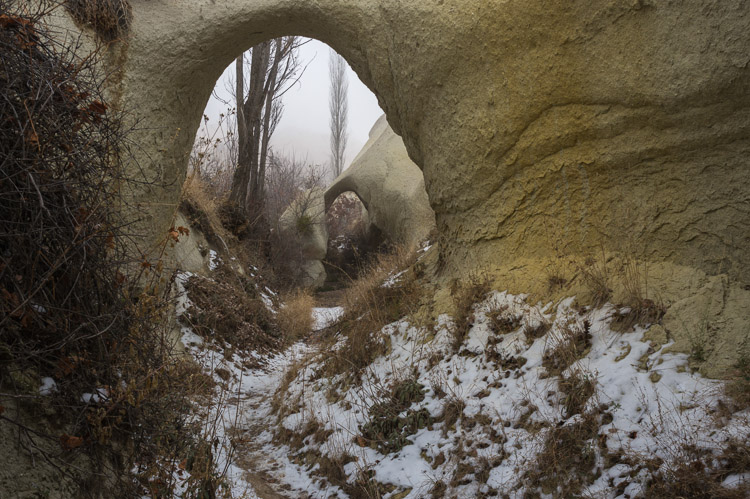
|
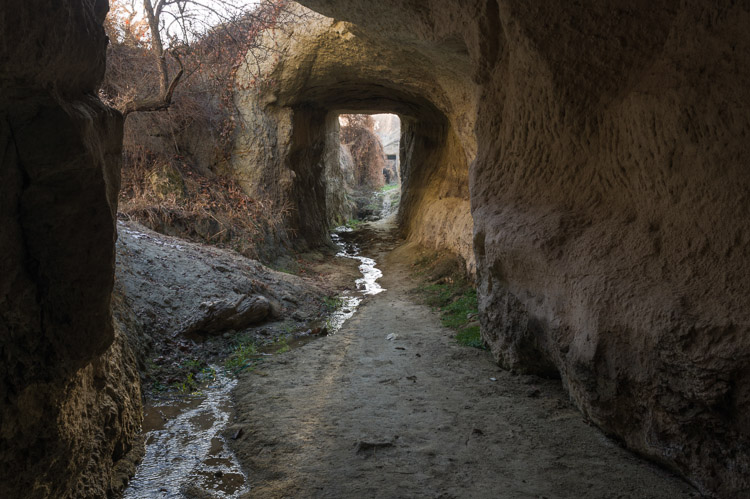
|
Caves

|
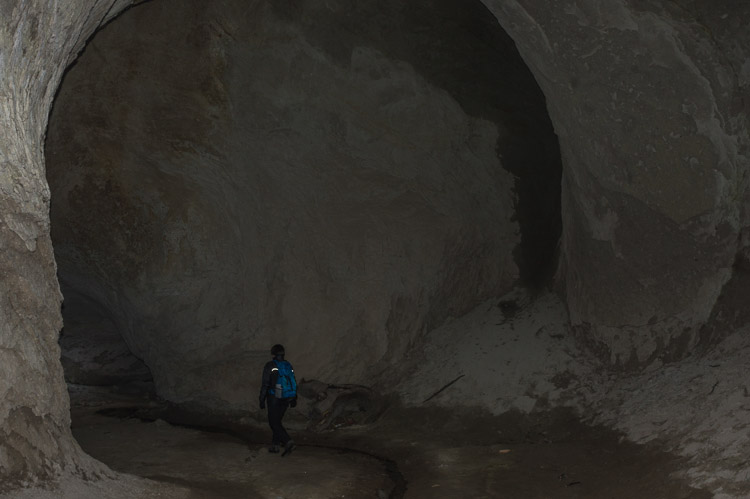
|
CafeDuring winter time many of the cafes are closed. The sunny look betrays the eye. In winter the temperature drops to and below zero in Cappadocia, patches of snow are found in shadowy places. |
BirdA forlorn but healthy hen obviously waiting for a taxi. |
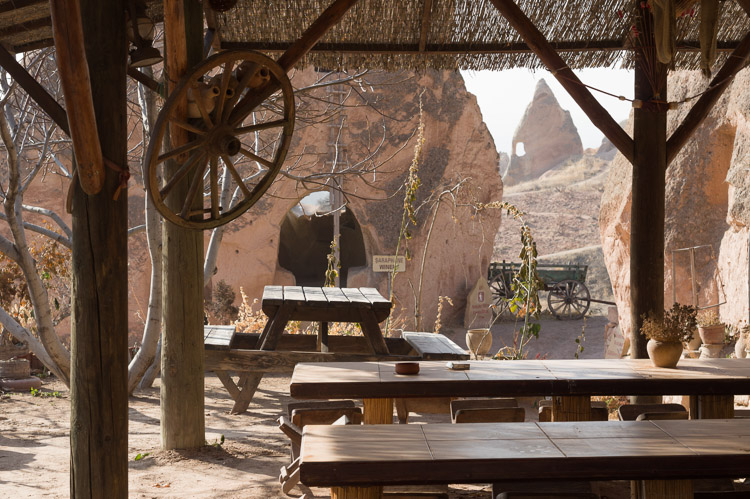
|
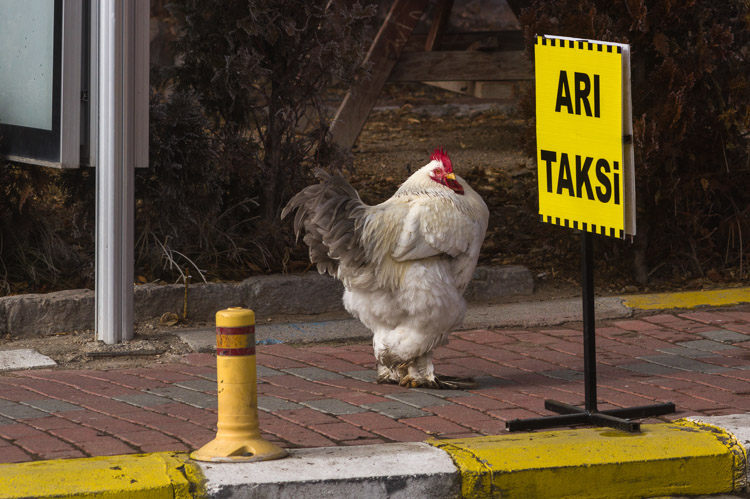
|
TownThe town of Uçhisar with its castle-like rock is visible between the walls of the Pigeon Valley. Today this ancient castle is a museum. |
CañonAt a certain point in the Pigeon Valley another cañon inside the already existing one opens before the visitor. The one problem: There is no way of descending further down the valley and a detour is necessary. |

|
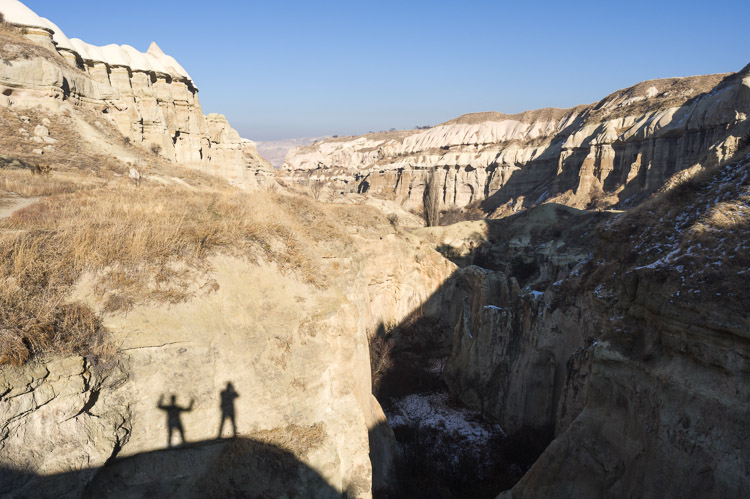
|
Cappadocia

HousesSome cones are used for accommodation even today, especially as hotels for tourists. These here are situated in Göreme. |
RuinsThe old town of Çavuşin looks like after a terrorist attack. Tuff is not concrete, and some excavations are based on too optimistic static calculations. To make it worse there was an earthquake in 1939. |
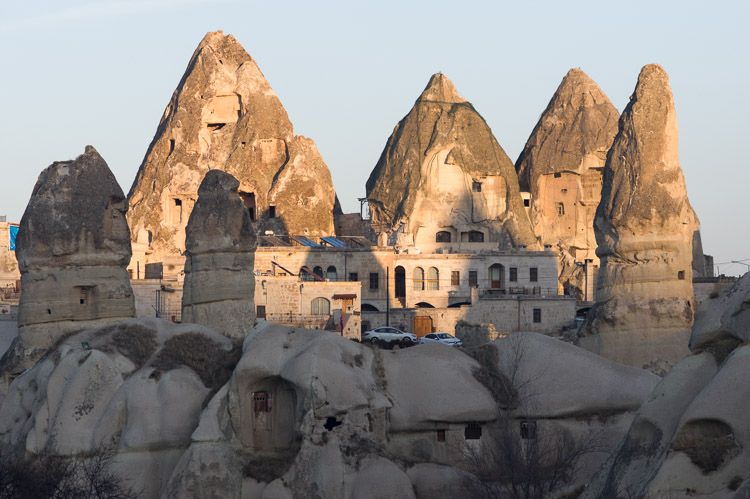
|

|
Variety of RocksNortheast of Çavuşin, almost before Paşabace, is a small plateau of white tuff stone with this nice view. |
ColumnsNear Paşabace, is another rather touristic place thanks to the passing road. These columns, however, are on the far side of the spectacle. |
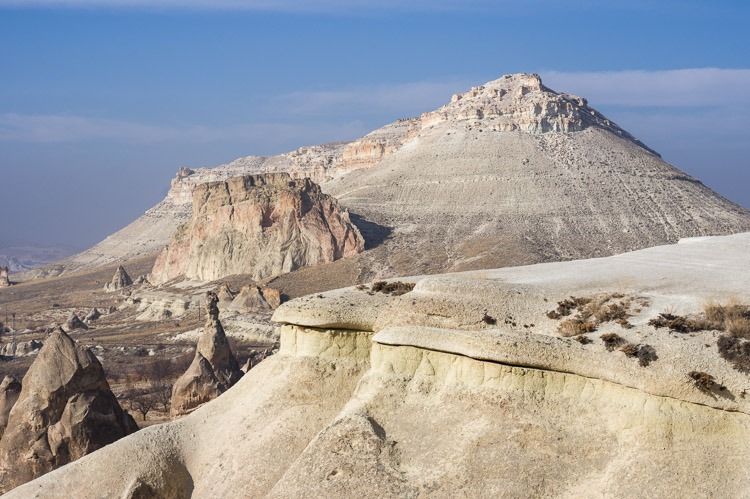
|
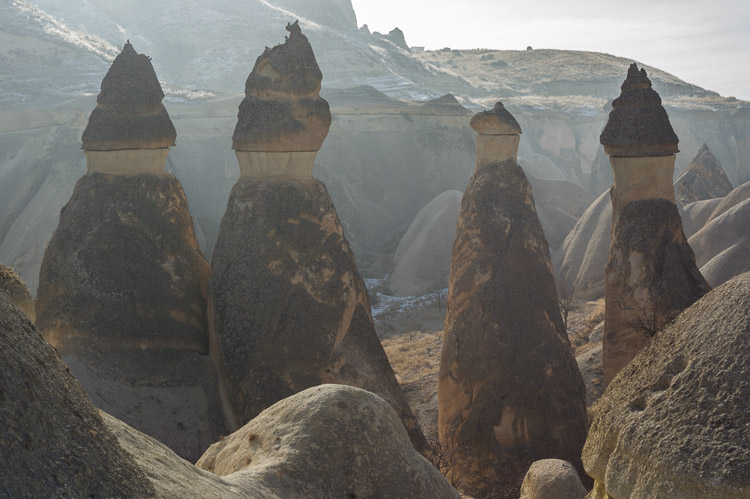
|
ErosionMuch of the erosion is powered by water, even in a dry region like Cappadocia. And water comes as rain from above, giving everything a cone-like shape. |
TiltedA change between softer and harder layers may disturb the ideal cone shape. And there is also the influence of wind. The cone may be slightly off center towards the main wind direction. |
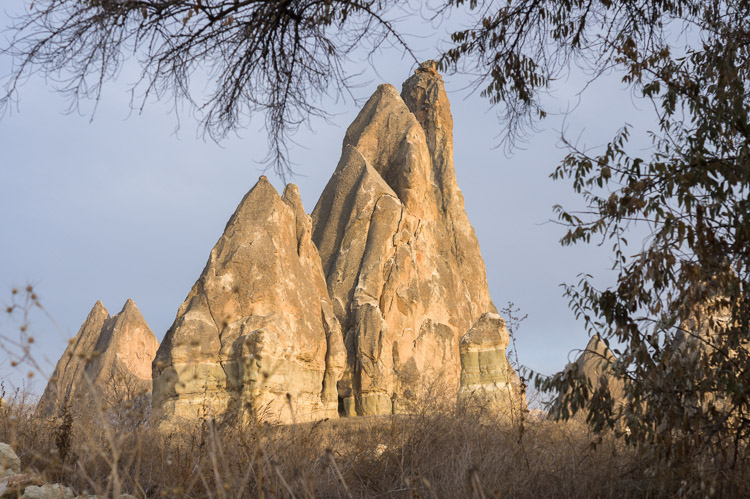
|
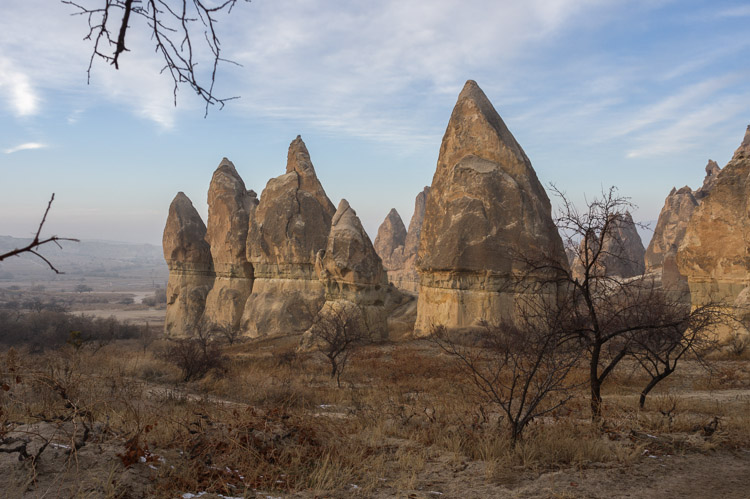
|
HardAnd why are there cones or columns at all? Right after the eruption a great many fumaroles came into life fed by groundwater and the immense heat of the tuff. The water escaped through channels much alike a network of rivers and led to differences in the structure of the tuff stone, which became a little more resistant in these places. |
SoftThe columns show a harder layer on top with a cone-like shape, below a softer layer with almost vertical sides, eroding much quicker, but thankfully shielded by its hard top and hence taking on a size similar to its hard top. |
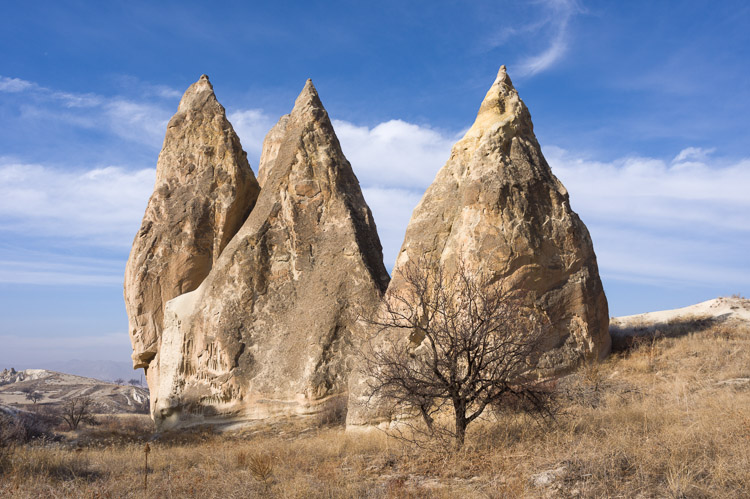
|

|
Group
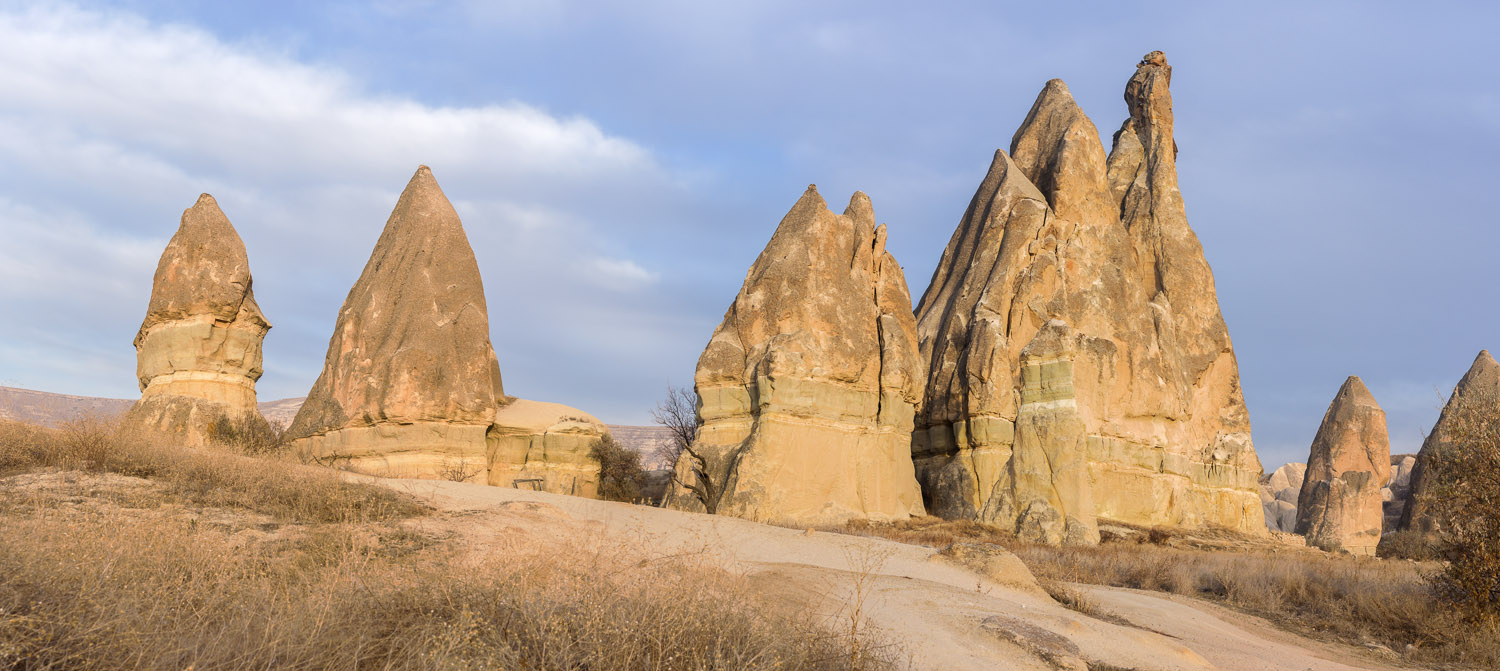
HOME